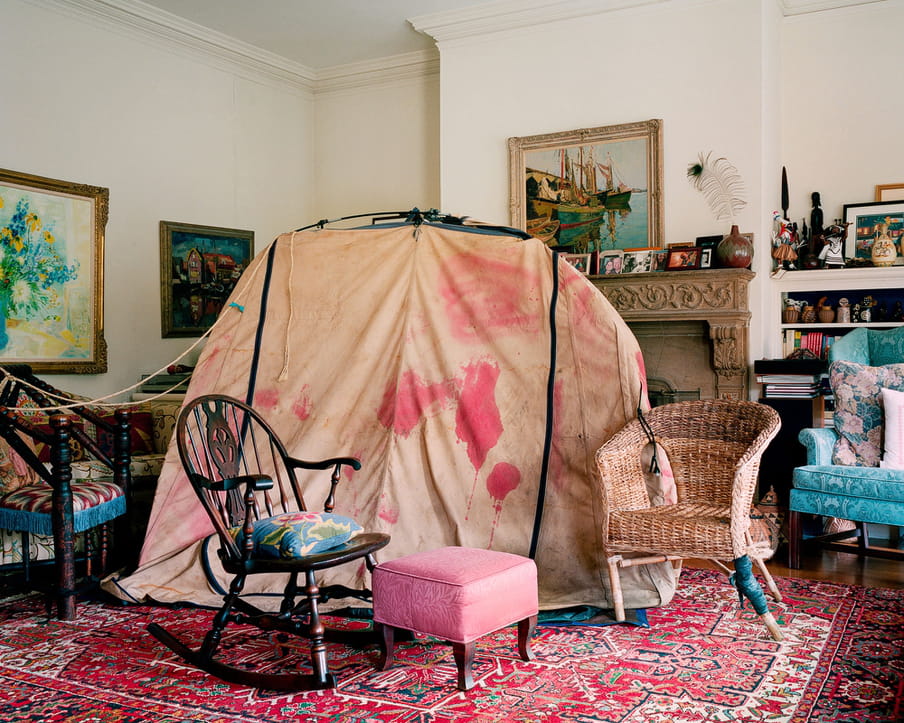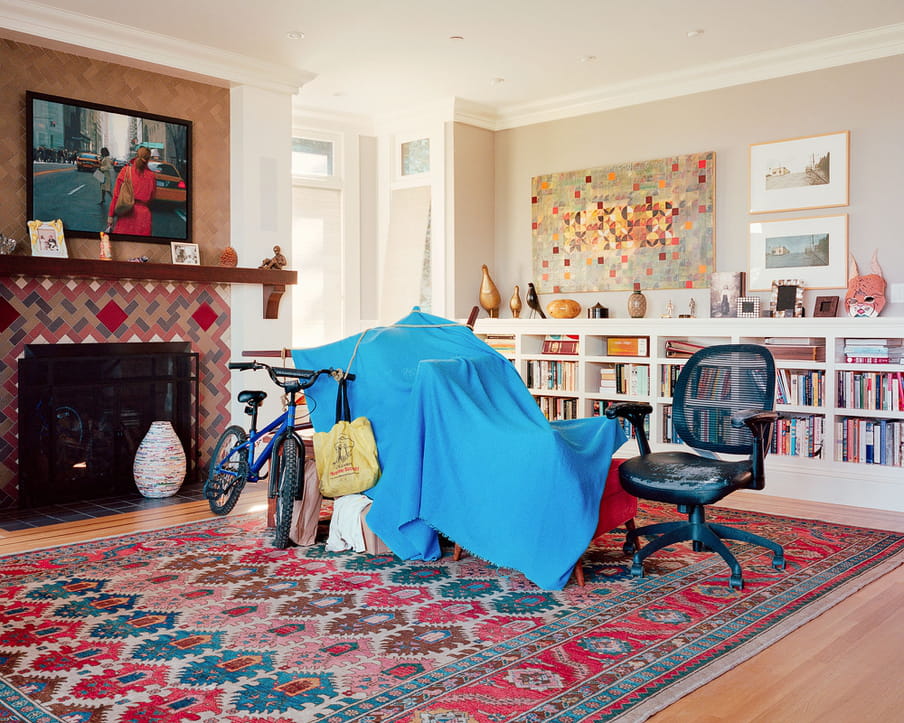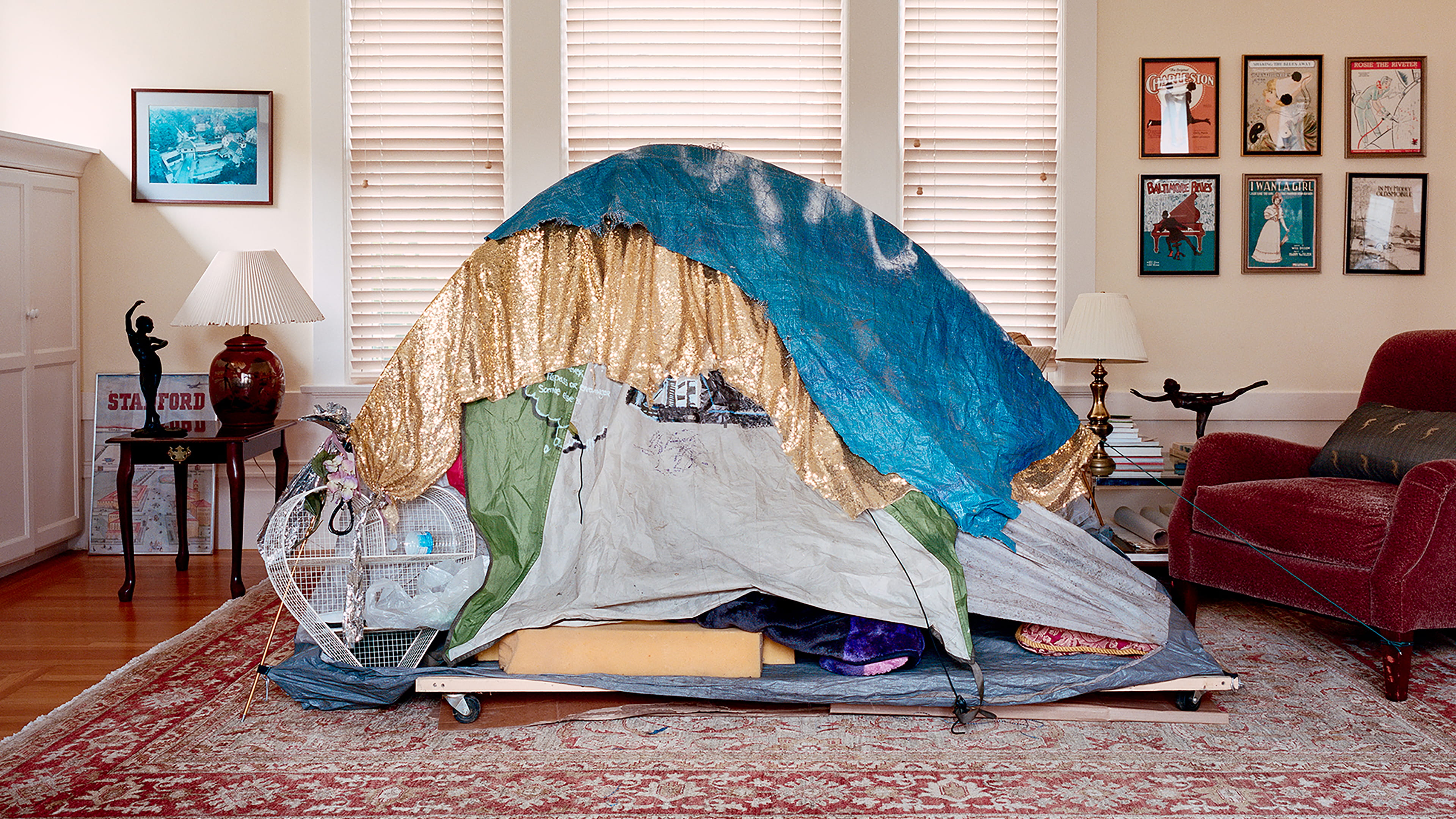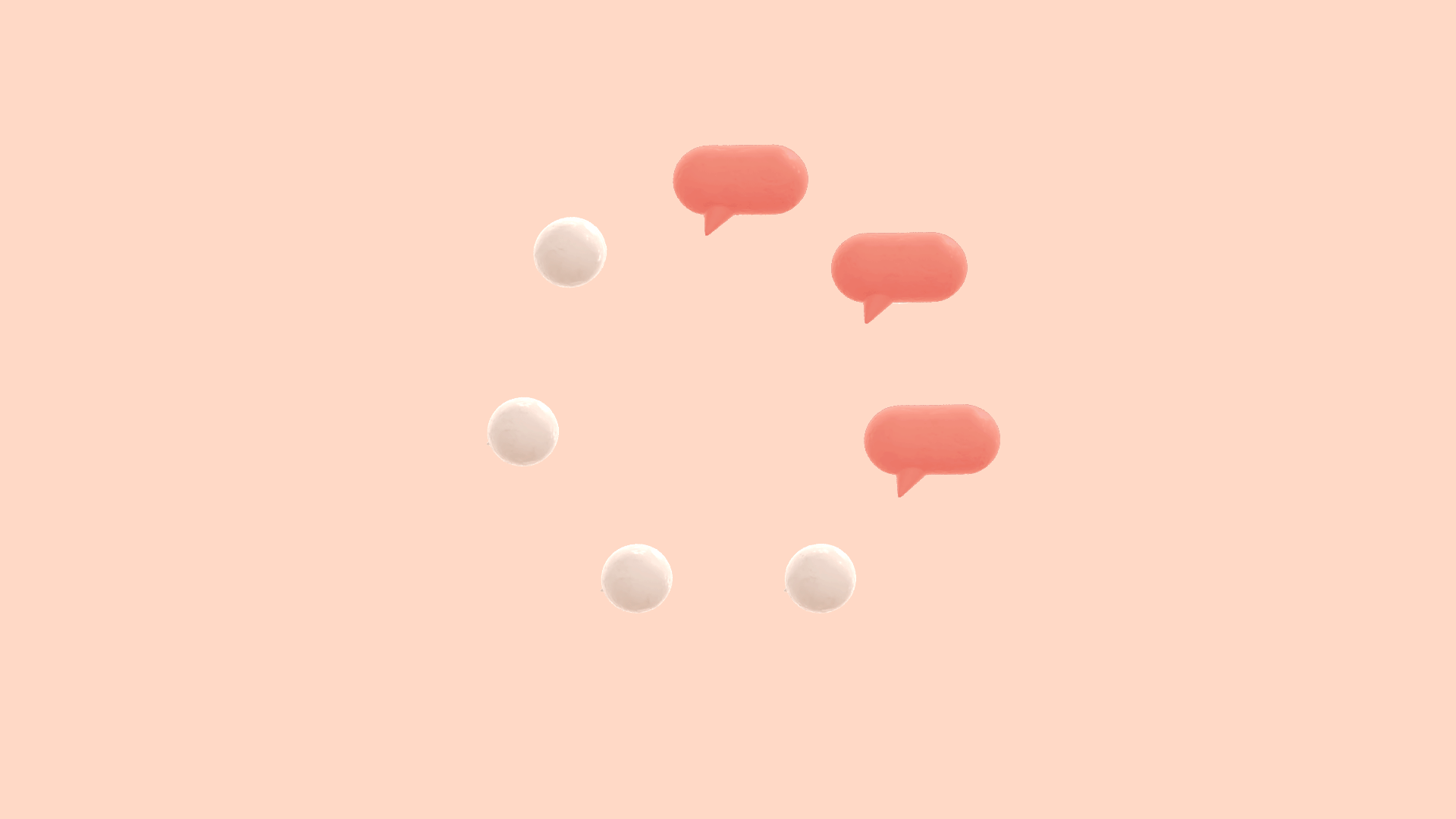On a Sunday evening in March, the Dutch prime minister told us to “stay at home”, and from that moment on, it has seemed like home is all there is.
My daughter’s teacher sends advice for homeschooling our children. My partner crams a tiny desk between our bed and the wall, creating a makeshift home office. Every day, the newspaper publishes new lists of films to watch, books to read, and museum exhibits to visit online – all while sheltering in place, at home. A giant poster ad appears next to the bus stop on our street, featuring a slight tweak to the lyrics from a popular Dutch song : ‘Sing, fight, cry, pray, laugh, work (from home) and admire.’
“Blijf thuis,” our prime minister repeats in his umpteenth press conference, first in Dutch and then in other languages: Bleib zu Hause. Restez à la maison. Stay at home. Online, I can’t escape ads from a famous furniture store : “Home is more important than ever,” purrs the cheerful voiceover.
There’s a game I played as a child: I would pick a word, any word, and say it over and over until the sound became absurd, meaningless, foreign. For me, this is exactly what the pandemic has done to the word “home”. The more I hear it, the stranger it sounds – and the less I seem to understand what it’s supposed to mean.
Because when, exactly, are we home?

Settling uncomfortably
It might be that the confusion I’ve been feeling is a matter of timing.
We’ve just moved house, on the Saturday before the schools closed. Most of the friends who had promised to help us move pulled out at the last minute because they weren’t feeling well, or had a cough, or just, you know, because – but in the end, we found just enough helping hands to get the job done. Our children stayed with their grandparents – that still seemed OK to do, back then. Just as the whole country was about to go into lockdown, we turned the key in our new front door.
In the run-up to the move, I told everyone within earshot how disruptive it was, this whole moving thing: to pack up an entire household, the looming departure, the prospect of starting anew. I wasn’t sleeping well, and when I did sleep, I had vivid dreams about packing and unpacking; about furniture that turned out to be too big or too small, about walls accidentally painted in the wrong colour and which couldn’t be repainted, ever.
But just like that, all that was in the past. We had moved in, most of our possessions were in their proper places, only a few boxes were left to unpack. The next day I ran out to pick up a couple of last-minute items: a shower curtain that we wouldn’t end up using, and a safety rail for my daughter’s new bed (raised above a built-in desk). At the store, when I paid for them, I tried to stay as far from the cashier as possible. This wasn’t easy at that point; it still felt awkward, unnatural.
Privately, I blamed my strange paralysis on what I began to call ‘domestic gravity’
I didn’t know that within a few weeks, the opposite would happen: it would start to feel unnatural to come near, too close, to anyone. Not maintaining physical distance would become a cause of discomfort.
New houses are like new shoes. You have to break them in, wear them until they’re no longer stiff and shiny; until they fit like they were made for your feet. Then home feels like home. We seemed to be off to a great start, because on our first Sunday, after I had gone to the store, we had unpacked the last of the boxes, and my parents returned our children, the prime minister announced that schools and daycare centres wouldn’t open the next morning: for the time being, we would all be staying, as much as possible, at home.

But since then, despite so many hours and days in our new house, I haven’t quite managed to settle in and feel at home. Or at least, I didn’t feel what I had always assumed – subconsciously, probably naively – that “feeling at home” would feel like: a kind of effortlessness, taken for granted, a sense of being free and sheltered at the same time.
Whether it was because of the move, or the virus, or both, I had no idea; but I felt restless, and ill at ease. At the same time I was sluggish, struggling with inertia. It was an ordeal to leave the house, even though I very much wanted to and we were all still allowed to go outside.
I blamed my strange paralysis on what I had begun (privately) to call “domestic gravity”. My partner and children had fallen under its strange spell too: our enthusiasm and zeal for our new home and situation were starting to give away. We succumbed to a languid listlessness. And so I did what I always do when something makes me feel uncomfortable: I began to read up on it.
At home with the frugal Dutch
In our new bookcase, on the shelf I’ve reserved for history books, sits Home: A Short History of an Idea, by the Canadian-American architect Witold Rybczynski. Humans have always sought a place to live, he writes, but that has by no means always been a place to call “home” – at least not in the way we think of it today.
Home turns out to be a restless, shifting, elusive notion
In medieval Europe most houses were small, cramped and crowded. Back then, most people worked, ate, slept and socialised all in the same place – as we do now, during the pandemic. But unlike today, a household included not just parents and children but apprentices, labourers, domestic servants and friends. Privacy as we know it was still to be invented: a home was a public, porous place.
All that began to change around the 17th century. It was a change that transformed life across Europe. As in every sweeping transformation, the causes were varied, and so were its manifestations. Still, Rybczynski places one country at the forefront of this wave of change, a country he describes “as having been, at the very least, exemplary”: the Netherlands.
While the rest of Europe was still primarily rural, Rybczynski writes, “the Netherlands was rapidly becoming a nation of townspeople. Burghers by historical tradition, the Dutch were bourgeois by inclination.” They were frugal, too, and their houses were often small, both physically and in terms of the households they contained.

Merchants and craftsmen commonly worked outside the home, households rarely hired domestic help, mothers raised their children on their own, and children stayed in the home longer because they were attending school, rather than starting apprenticeships, from the age of seven. As a result, most homes of the urban bourgeoisie in the Netherlands “housed a single couple and their children”.
For them, “home” became less an extension of the public space, and a private domain instead: a place where comfort, intimacy and safety were the principal values. Before too long, the household became synonymous with the nuclear family, and “home” gradually took on the meaning it still has today.
Home: like it or not
Except that, of course, it doesn’t really have just one meaning. “Home” means very different things to different people, I read in Home: A Very Short Introduction by the American philosopher Michael Allen Fox (I bought the book shortly after our move, together with Viruses: A Very Short Introduction). While many of us associate “home” with familiarity, permanence and immutability, it turns out, Fox writes, to be “a restless, shifting, somewhat elusive notion” instead.
Etymologically, home – like Swedish hemma and German heim – is derived from the Old Norse heima. It refers not only to a concrete place, but to a state of being as well. The term is both objective and subjective, connoting both a physical structure and a set of emotional associations. These buildings and the feelings they evoke span a huge range, between dramatic extremes.
Home as a safe haven is a theoretical ideal, not a lived reality
What to think, for example, about those for whom home is not a safe space at all, but rather a place one must escape as soon as possible? Globally, reports of domestic violence are on the rise, in tandem with the rise in Covid-19 infections and the roll-out of lockdown measures.
Or what of people who live alone, for whom home doesn’t equal “family”, or who might currently associate home more with loneliness and isolation than with companionship and comfort? Or the many, many people for whom home is no fixed place or experience at all, but rather a longing that they might never see fulfilled?
I think of the refugee camps on the Greek islands, already overcrowded beyond capacity: “The corona pandemic that threatens to overwhelm the camps will have catastrophic consequences for the refugees,” European doctors warn in a call to action. The prime minister tells us to stay home – but, as the front page of a newspaper published by a local homeless shelter points out, that’s “hard to do when you don’t have one”.
For many, then, the concept of “home” as a safe haven is a theoretical ideal rather than a lived reality. And even the idealised home – “home” as a bastion of peace and quiet and safety, that holdover from a bourgeois age, has a flip side: “home” as a place of confinement, isolation, and a lack of freedom.
I wonder, for example, whether those 17th century Dutch women – the first in Europe to bear sole responsibility for running their house and raising their children – really thought of “home” as, first and foremost, a pleasant and safe place of comfort. Might they have felt burdened by these responsibilities as well? I for one find it hard to take true satisfaction in maintaining a home, a task with no real end, both repetitive and relentless. As Dutch feminist icon Joke Smit observed, in 1967, describing the mother of young children: “the result of her work is being demolished underneath her hands: she therefore gets the sense that all her efforts are for naught”.

So I sympathise with those second-wave feminists who, half a century ago, set about dismantling the idealised construct of domestic home life. In their eyes, writes Dutch sociologist Jan Willem Duyvendak in his essay De Onttovering van Thuis , The Disenchantment of Home, women were “excluded from full equality and opportunity; in this role, they were effectively locked up behind the walls of private life, while men, the breadwinners, found the whole world open to them.”
In the decades since, women have left the house and entered the labour market in droves. But has that made us feel any less confined? Or do we feel trapped now, between two worlds, inside and outside, both sides demanding more than we can give? For no matter how much time we’re spending outside the home compared to previous generations, most of us still have a hard time getting past the notion, whether internalised or imposed by others, that it’s our job to turn our house into a home.
Order in the house
At night, in a room that still smells faintly of paint, I lie awake reading Making Home , an essay by the British novelist Rachel Cusk. Home, she observes, is “where personal ideals are externalised or personal failures made visible.”
My personal ideal is also my personal failure: order. It’s an ideal because it’s unattainable – three other people live in this house, two under the age of seven, so all my attempts at creating order are predestined for sabotage. This is especially true now that we’re all at home, all of the time, the four of us entwined in an endless choreography of making mess and cleaning up again.
The tidying I do is dictated, like most neuroses, primarily by a desire for control
The seventeenth- and eighteenth-century bourgeois households of the Netherlands were famous for the drive and dedication with which the lady of the house kept things tidy, Rybczynski writes. This fact was all the more striking, he notes, “since we know that in their personal habits the Dutch were not especially clean; there is plenty of evidence that they were considered, even by the insalubrious standards of the seventeenth century, to be dirty.” But cleaning oneself and cleaning up a house are, of course, two very different things.
I’ve never been a germophobe, although I’m washing my hands more than ever before these days – and I’m constantly trying to get my children to do the same. Our new house is never squeaky clean, but it is, quite often, tidy.

The tidying I do is dictated, like most neuroses I suppose, primarily by a desire for control. I’ve always been enamoured of feeling in control, but presently this desire is getting free rein – if only because I’m spending so much time at home that it’s all too easy to get caught up in putting things back in their place. Toy trains go in the toy train drawer, there’s a bucket for the Barbies, marker pens go with the markers and the pencils go with the pencils.
It’s a way of dealing with uncertainty: however chaotic or unpredictable the outside world becomes, at home I know exactly where everything is – at least in theory. I’ll admit to sometimes tidying up too well, causing things to get lost (especially in our new house). Also, putting things back in place takes up a lot of time, time I could have spent doing other things. This is why my personal ideal is my failure, too.
On the other hand, since we’ve moved in, the rest of the world seems to have joined me in my domestic inclinations. The messier and more unpredictable the pandemic becomes, the greater the desire – the necessity, perhaps – to bring our immediate circumstances under control. The virus is messing up the world, and the only way to keep the chaos in check is by making sure everyone stays, as much as possible, in their place. Barbies in their bucket, people in their homes.
Back to the fort
One Sunday morning in April, a giant nest springs up next to the bookcase in the living room. My son and daughter have collected every blanket and pillow they could find, and piled them into a great heap on the floor. They ask if I want to lie down in it with them. It looks cosy, although I know someone’s going to have to tidy it all away later.
I make a half-hearted counter-offer. Would they like to come outside with me? To take a bike ride? Do some chalk drawings on the pavement? Maybe play on the scooters a bit? But after days and days of sunshine, the weather has turned damp and grey; we can all see that. The children shake their heads: they’d rather stay inside, at home.
Our inertia is beginning to weigh on me. I’m reminded of something I read recently in Thuis. Verkenningen van het alledaagse , Home. Explorations of the Everyday, by the Dutch philosopher Pieter Hoexum. (The postman who delivered this book left it on the doorstep, rang the bell, and ran off. Social distancing had been the norm for a couple of weeks at that point; his behaviour didn’t strike me as odd at all.)

Even in the least complicated cases, when home feels like the home in “Home Sweet Home”, or “Home is where the heart is”, or any of the other aphorisms, there are still two sides to the story. “Living someplace means constantly bouncing back and forth between two urges: once you’ve found a place to stay, you want to get out, get some fresh air, go somewhere, and as soon as you’re out you start to think you should be getting back, to the safety of home ,” Hoexum writes.
For the ancient Greeks, Hestia, goddess of the hearth, represented “home”; but she was not the only one. Hermes did too, the god with winged sandals, the one who was always on the move. This duality among the gods, Hoexum writes, reflects a sense of home “marked by the same duality that humans have: mankind...is controlled by centrifugal as well as centripetal forces.”
Home is a ‘weapon’ in ‘the war being waged’ against the pandemic
It’s starting to dawn on me that the restlessness I’ve been feeling may have less to do with our house being new, and more to do with the fact that this house is so hard to leave. Not because it’s not allowed – in the Netherlands we can go outside when we need to, thankfully – but because of the steady drumbeat of official messages that it’s best if we don’t. Bleib zu Hause. Restez à la maison. Blijf thuis.
It seems to me that “home” is only truly a “home” when you have the option to leave it; when it’s a place to return to, rather than a place where you have to stay. But we are all less free to go now – and if you can’t go out, you can’t come home either.
Home is more important than ever, the famous furniture store told me in its ad. It might be more accurate to say that “home” has taken on a new role. In addition to being a refuge, a safe harbour, it’s become a tool, a “weapon” in the “war” being waged on the pandemic. It’s accrued a new meaning – one that has little to do with intimacy and the comforts of “home” and leaves many of us feeling a little displaced instead.
For the time being, home is no longer a personal matter, no longer a place of privacy – or at least not primarily. Our homes have been shifted back into the public arena, have become a matter of public interest. We’re staying inside, so that outside can become safe again, waiting it out until the day we can truly return, the day we can really come home.
My children ask me once again if I want to join them in their blanket fort. I look out the window, at the chilly and unappealing world outside, and decide that they’re right about wanting to stay home. Then I get down on my knees, and crawl in with them.
Translated from Dutch by Kyle Wohlmut and Joy Phillips
 About the images
When German photographer Jana Sophia Nolle first visited San Francisco in 2016, she was shocked by the extreme disparity between the city’s rich and poor. In her series Living Room she combines these two worlds into one image. For two years, she lived among both groups – the rich with their homes, and the homeless. By recreating the makeshift dwellings of the homeless in the middle of the living rooms of the better-off, Nolle shines a light on what she believes to be a fundamental human need: a place for privacy and security. The second edition of the book from the project is planned for June 2020. (Lise Straatsma, image editor)
About the images
When German photographer Jana Sophia Nolle first visited San Francisco in 2016, she was shocked by the extreme disparity between the city’s rich and poor. In her series Living Room she combines these two worlds into one image. For two years, she lived among both groups – the rich with their homes, and the homeless. By recreating the makeshift dwellings of the homeless in the middle of the living rooms of the better-off, Nolle shines a light on what she believes to be a fundamental human need: a place for privacy and security. The second edition of the book from the project is planned for June 2020. (Lise Straatsma, image editor)
Dig deeper
 Meet Yuli Yang, the coronavirus stigma buster
"The city that I grew up in and today’s Wuhan are two different worlds. No one had air conditioning units at home. Even small standing electric fans were items of luxury. No one owned cars, and buses stopped running soon after sunset. But no, this does not mean nightly tranquility. It was quite the opposite.
Meet Yuli Yang, the coronavirus stigma buster
"The city that I grew up in and today’s Wuhan are two different worlds. No one had air conditioning units at home. Even small standing electric fans were items of luxury. No one owned cars, and buses stopped running soon after sunset. But no, this does not mean nightly tranquility. It was quite the opposite.
 Dear parents, stop organising your kids’ playtime
Now that 1.5 billion children are stuck at home, parents struggle to arrange a schedule for schooling and playtime. The good news: play doesn’t need to be planned – and it shouldn’t be.
Dear parents, stop organising your kids’ playtime
Now that 1.5 billion children are stuck at home, parents struggle to arrange a schedule for schooling and playtime. The good news: play doesn’t need to be planned – and it shouldn’t be.

